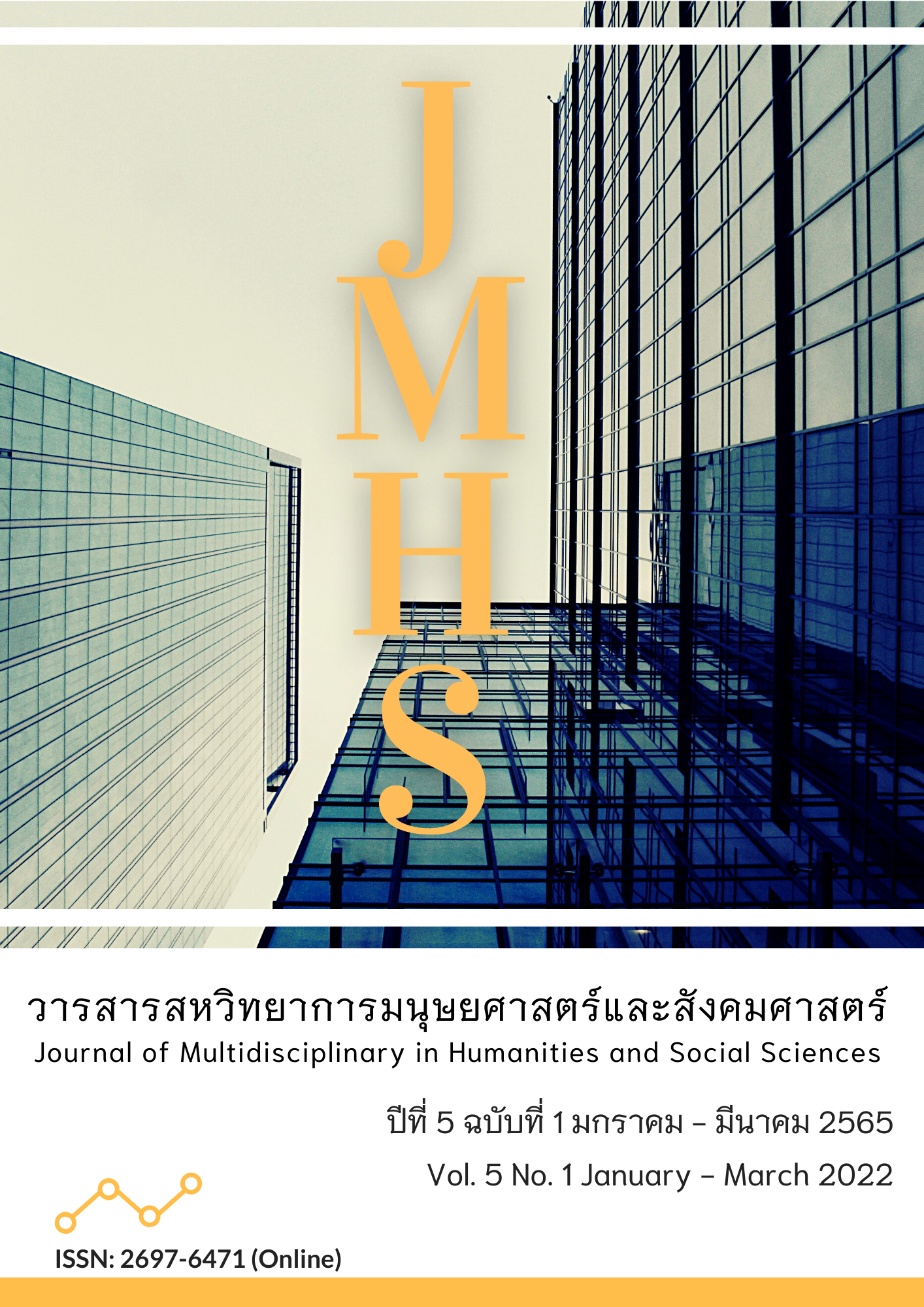การบำเพ็ญบารมีและการบรรลุธรรมของพระเมฆิยเถระ
Main Article Content
บทคัดย่อ
บทความนี้มีวัตถุประสงค์ 1) เพื่อศึกษาการบำเพ็ญบารมีและการบรรลุธรรมในคัมภีร์พุทธศาสนาเถรวาท 2) เพื่อวิเคราะห์การบำเพ็ญบารมีและการบรรลุธรรมของพระเมฆิยเถระ โดยการศึกษาข้อมูลจากคัมภีร์พุทธศาสนาเถรวาท และเอกสารต่าง ๆ ที่เกี่ยวข้อง สรุปวิเคราะห์ เรียบเรียง บรรยายเชิงพรรณนา ผลการวิจัยพบว่า พระเมฆิยเถระ ในอดีตชาติเคยเกิดในสมัยพระวิปัสสีพุทธเจ้า กระทำความเคารพในพระพุทธเจ้าที่ทรงปลงพระชนมายุสังขาร หลังจากเสียชีวิตจึงได้เกิดในสวรรค์ตลอดกัป ไม่เคยเกิดในทุคติเลย นี้เป็นอานิสงส์ของการตั้งจิตรำลึกถึงพระพุทธเจ้าในชาติสุดท้าย ท่านถือกำเนิดในตระกูลแห่งเจ้าศากยะ ในพระนครกบิลพัสดุ์ บวชในสำนักของพระบรมศาสดา อุปัฏฐากพระพุทธเจ้าอยู่ในปฐมโพธิกาล ท่านเข้าไปยังอัมพวันนั่งพักกลางวันอยู่เกิดอกุศลวิตก 3 ประการ คือ กามวิตก พยาบาทวิตก วิหิงสาวิตก ไม่อาจทำกรรมฐานให้เป็นสัปปายะได้ พระพุทธองค์ให้ท่านเจริญธรรม 5 ประการ คือ 1) เป็นมีกัลยาณมิตร 2) เป็นผู้มีศีลสำรวมในพระปาติโมกข์ 3) เป็นผู้พูดวาจาเป็นสุภาษิต 4) เป็นผู้มีความเพียรความบากบั่น 5) เป็นผู้มีปัญญา และพระองค์ตรัสให้บำเพ็ญธรรมอีก 4 ประการ คือ 1) บำเพ็ญอสุภะเพื่อละราคะ 2) บำเพ็ญเมตตาเพื่อละพยาบาทวิตก 3) บำเพ็ญอานาปานสติเพื่อละวิตก 4) บำเพ็ญอนิจจสัญญาเพื่อถอนอัสมิมานะได้เด็ดขาด พระเมฆิยเถระได้ปฏิบัติตามโอวาทของพระพุทธเจ้าและตั้งอยู่ในความไม่ประมาท เพียรพยายามบำเพ็ญสมณธรรม ไม่นานก็ได้บรรลุพระอรหันต์
Article Details

อนุญาตภายใต้เงื่อนไข Creative Commons Attribution-NonCommercial-NoDerivatives 4.0 International License.
ทัศนะและความคิดเห็นที่ปรากฏในวารสาร ถือเป็นความรับผิดชอบของผู้เขียนบทความนั้น และไม่ถือเป็นทัศนะและความรับผิดชอบของกองบรรณาธิการ
เอกสารอ้างอิง
จิรพร ชีวะธรรม และ อุทัย สติมั่น. (2564). วิเคราะห์การพัฒนาชีวิตตามหลักธรรมที่ปรากฏในพระไตรปิฎก. วารสาร มจร บาฬีศึกษาพุทธโฆสปริทรรศน์, 7(1), 96-106.
บรรจบ บรรณรุจิ. (2557). อสีติมหาสาวก. (พิมพ์ครั้งที่ 2). กรุงเทพฯ: กองทุนศึกษาพุทธสถาน.
พระธรรมมังคลาจารย์ (ทอง สิริมงฺคโล). (2553). ทางสายเอก. (พิมพ์ครั้งที่ 7). เชียงใหม่: ดาราวรรณการพิมพ์.
พระพรหมคุณาภรณ์ (ป.อ.ปยุตฺโต). (2558). พุทธธรรม ฉบับปรับขยาย. (พิมพ์ครั้งที่ 41). กรุงเทพฯ: ผลิธัมม์.
พระมหากิตติณัฏฐ์ สุกิตฺติเมธี. (2564). การวิเคราะห์แนวทางงดเว้นจากความเสื่อมในปราภวสูตร. วารสารสหวิทยาการมนุษยศาสตร์และสังคมศาสตร์, 4(1), 84-95.
มหาจุฬาลงกรณราชวิทยาลัย. (2539). พระไตรปิฎกภาษาไทย ฉบับมหาจุฬาลงกรณราชวิทยาลัย. กรุงเทพฯ: โรงพิมพ์มหาจุฬาลงกรณราชวิทยาลัย.
สมเด็จพระเทพรัตนราชสุดาฯ สยามบรมราชกุมารี. (2543). ทศบารมีในพุทธศาสนาเถรวาท. (พิมพ์ครั้งที่ 4). กรุงเทพฯ: โรงพิมพ์มหามกุฎราชวิทยาลัย.
สมเด็จพระมหาสมณเจ้า กรมพระยาวชิรญาณวโรรส. (2538). ธรรมวิภาค ปริจเฉทที่ 2. กรุงเทพฯ: โรงพิมพ์มหามกุฎราชวิทยาลัย.


